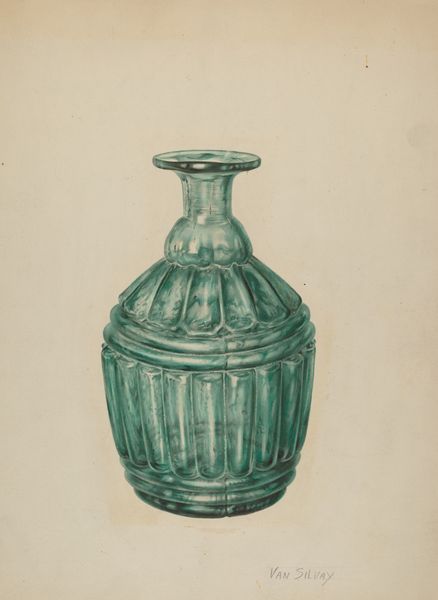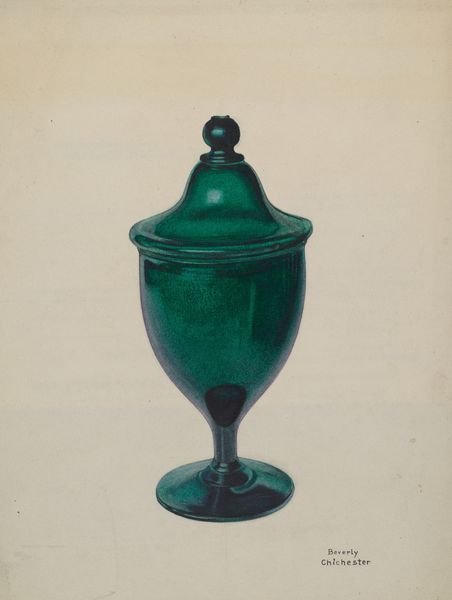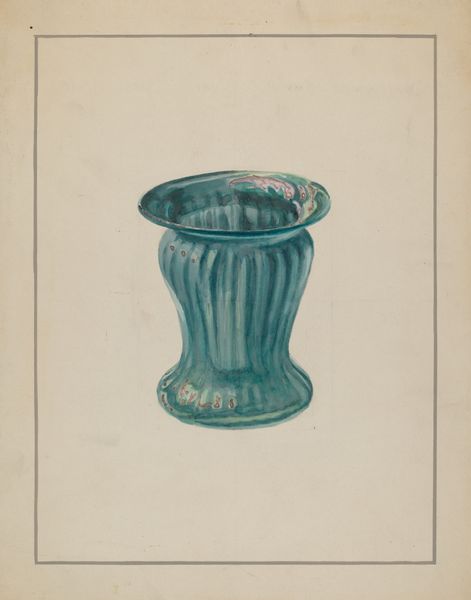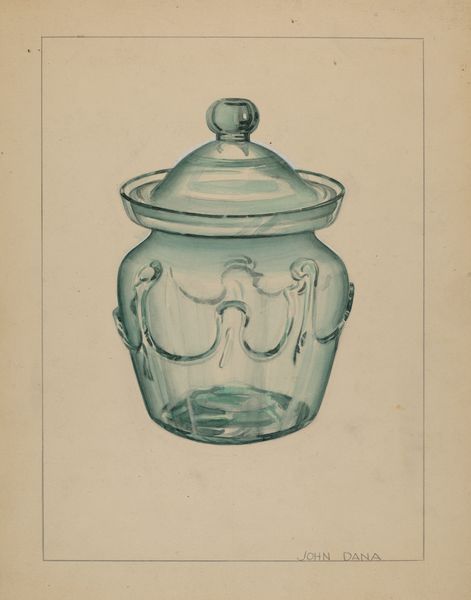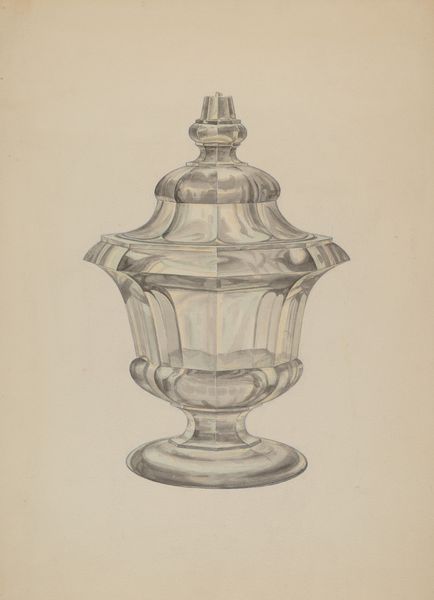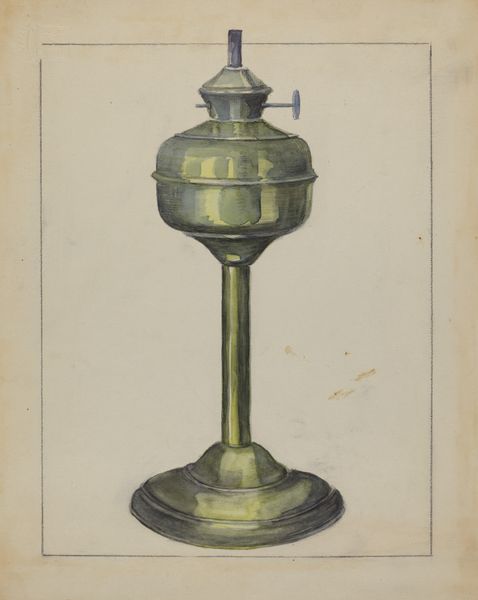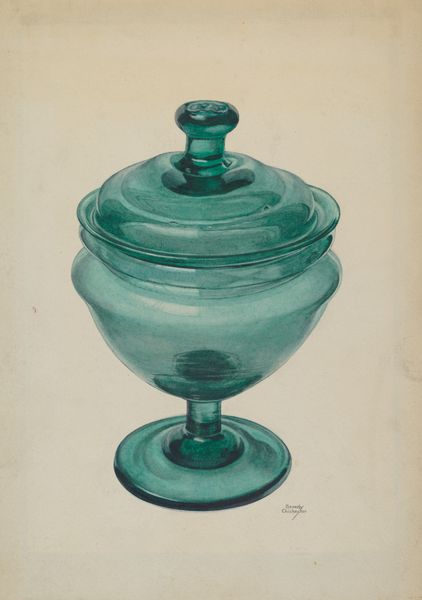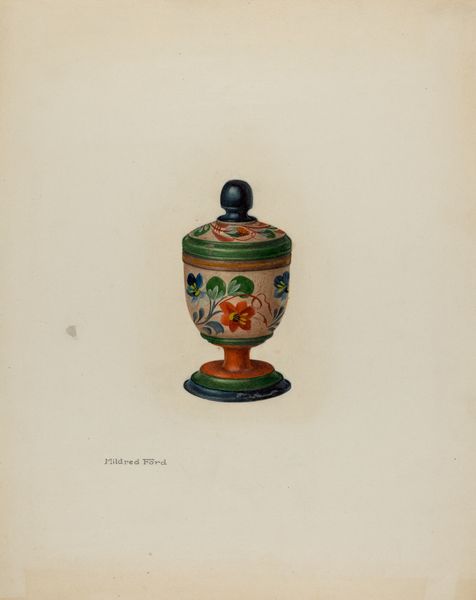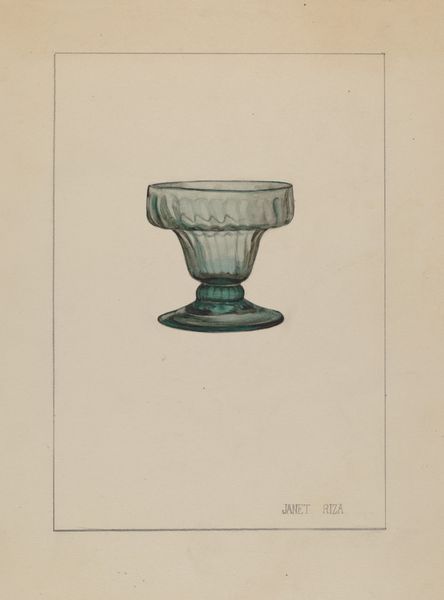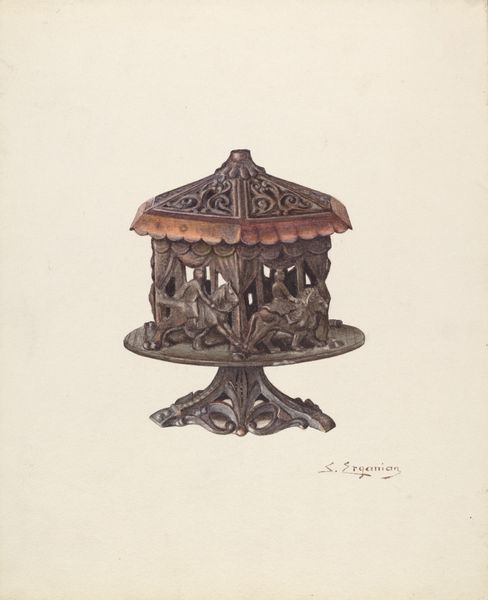
drawing, watercolor, ink
#
drawing
#
watercolor
#
ink
#
geometric
#
watercolour illustration
#
decorative-art
#
modernism
Copyright: National Gallery of Art: CC0 1.0
Curator: This delightful design study is called "Sugar Bowl," attributed to Giacinto Capelli around 1937. It’s rendered in ink and watercolor, a combination offering precision and a subtle wash of color. Editor: My initial impression is how pristine it looks! A single vessel depicted in detailed, almost technical draftsmanship, and that green hue...it's quite striking, a nod to the object's materiality itself. Curator: Precisely! Capelli's drawing gives us a glimpse into the world of decorative arts during the period. One can easily envision how design concepts made their way from paper into production for an eager consuming public. The art deco motifs and streamlined forms certainly suggest aspirations for luxury and modernity amidst challenging socio-economic circumstances of the 1930s. Editor: It definitely highlights a moment where industry meets artistic ambition. This wasn’t just art for art’s sake; it’s design intended for mass production and, presumably, mass consumption. The chosen materials themselves speak volumes - glass production becoming increasingly accessible allowed for more elaborate forms and detail as we see here, creating objects with wider appeal than traditionally ornate glassware Curator: Absolutely. It reveals the artist as someone straddling the line between designer and craftsman, catering to evolving tastes while negotiating industrial processes. It raises fascinating questions: Who were the intended consumers, and what social functions did this elaborate sugar bowl serve? These items could signify status. Editor: It really does challenge our current notions of "high" versus "low" art. We look at this object and wonder how many hands actually shaped its physical existence – the designer, yes, but also the factory workers, the glassblowers, the finishers... Their labor is implicit in this beautiful piece. It almost reads as a materialist record of industrial art processes. Curator: Agreed! It forces us to consider not only its aesthetic qualities but also its production chain. Thinking of design through the lens of mass manufacturing truly democratized the fine craft. And here it is celebrated and preserved as an art piece in and of itself, thus creating social mobility between classes. Editor: So, a seemingly simple object becomes an echo of both ambition and labour, highlighting tensions around consumerism but opening our minds to question of material accessibility for a wider class. It definitely makes you think beyond the sugar! Curator: Indeed, a tiny time capsule of societal ideals rendered with thoughtful precision.
Comments
No comments
Be the first to comment and join the conversation on the ultimate creative platform.

